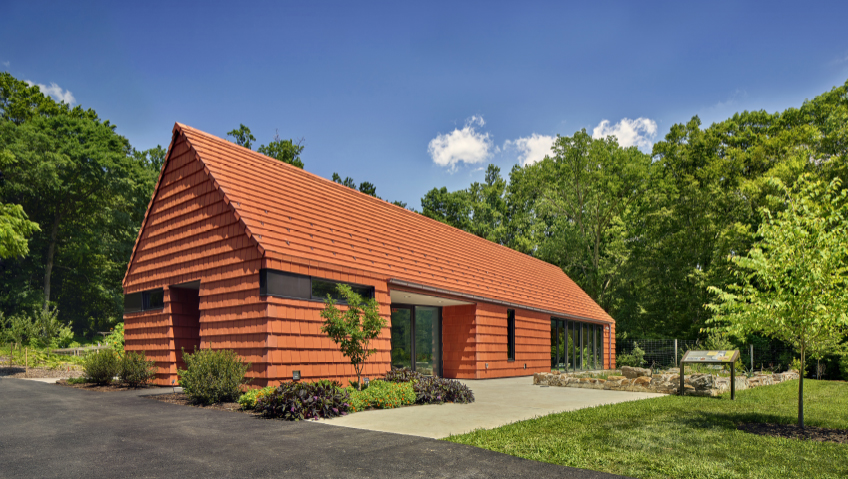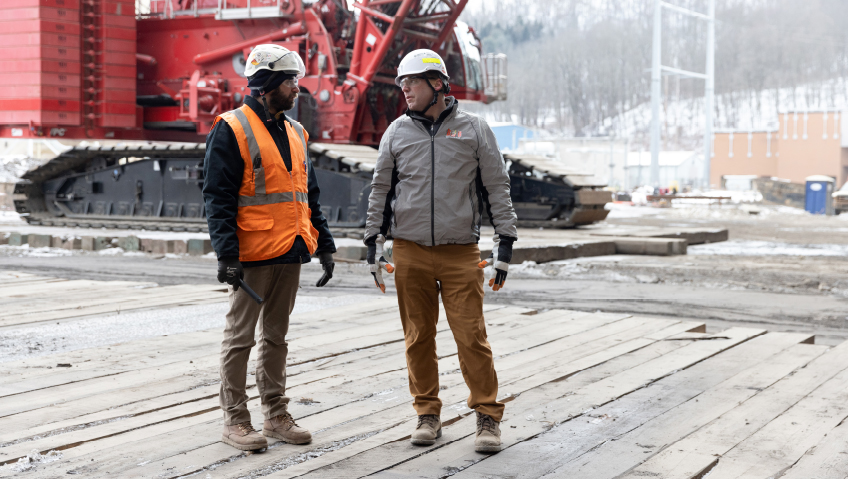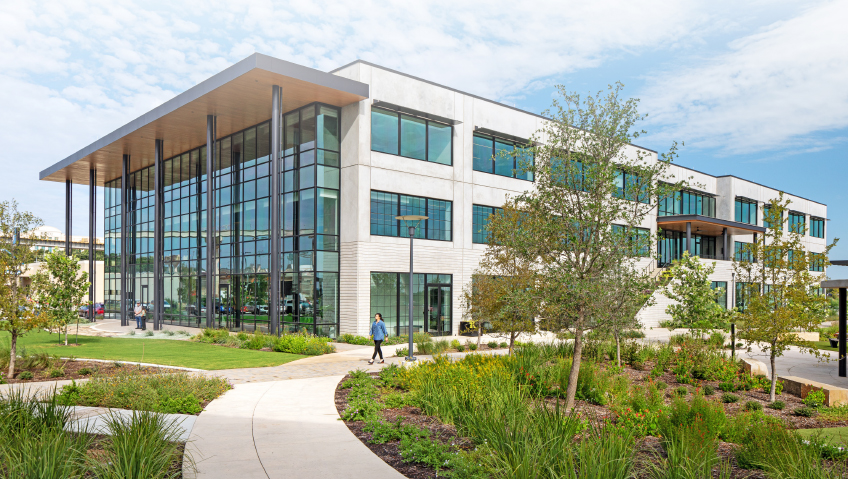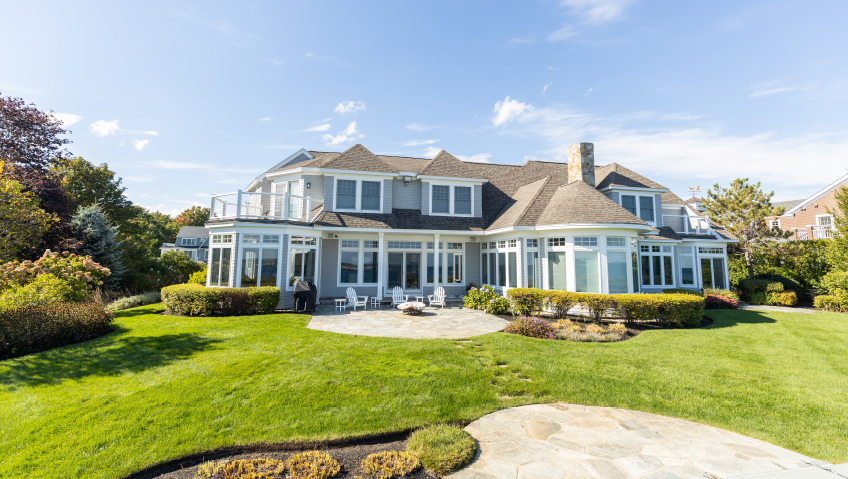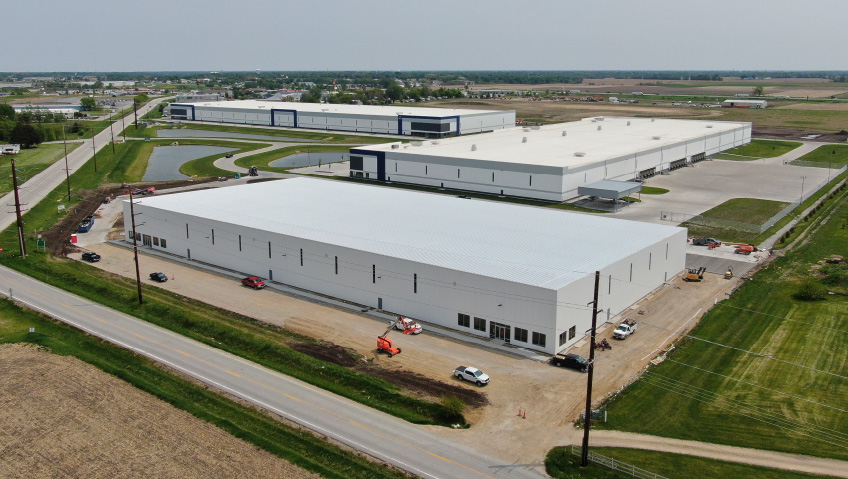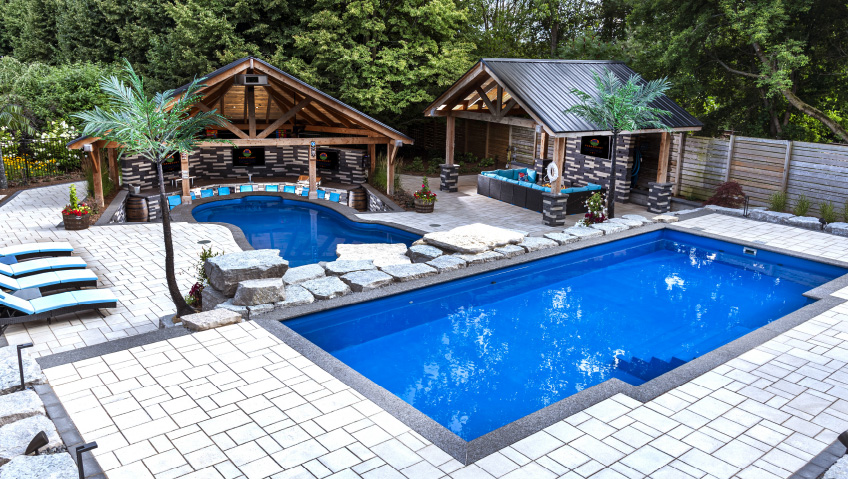Evoking historical architecture and Mediterranean climates, terra cotta tiles are beautiful and timeless. Adorning museums, universities, and residences, they’re not usually associated with modern architecture or harsh winters – but Ludowici tiles prove those assumptions wrong.
A 400-year-old legacy established by the Ludovisi family in Rome, Italy is firmly rooted in New Lexington, Ohio, where the same stylish and strong range of color, texture, and shape options flourish today.
With a life expectancy of over 100 maintenance-free and color-permanent years, these tiles save the environment from harsh chemical cleaners, and landfills from roofs that need replacing every few decades.
“I’ve been with Ludowici since 2004 and whenever I tell my family and friends what I do for my job, they say, ‘your company makes those Spanish and Mission roof tiles like you see in the southwest U.S.,’” says Vice President Rob Wehr. “I say, ‘that’s a small portion of our business.’ We make way more products than just those types of tiles, and if we only made Spanish/mission tiles we probably would have gone out of business a long time ago.”
While the company once operated out of five factories around the U.S., Ludowici now houses all its production in one of the original five factories in southeast Ohio. The reason is found in the ground. “Southeast Ohio has some of the finest clay deposits in the world,” says Wehr. “There are a lot of local brick and clay and pottery plants, and then our world-famous roof-tile plant. We’ve made products that are on so many historical structures around the country, and we’ve been in the same building operating since 1888. It’s really a great story.”
One of the biggest misconceptions about Ludowici and its product, says Wehr, is the automatic assumption that terra cotta means only reds, oranges, flowerpots, and Spanish and Mission tiles.
“We do so much more than that,” Wehr says. “One of the things that has allowed us to operate for so long and still be in business is that we have this amazing color palette. We have the ability to apply all these ceramic glazes to our terra cotta raw material, and the colors are permanent and last for as long as the tiles do.”
With a 75-year warranty on Ludowici tiles, clients should be careful to choose a color they truly love because they’ll be looking at it for life.
“We have a long, successful track record of making these non-traditional terra cotta colors that don’t fade,” says Wehr. “You have to be really particular when you pick your color for projects because that color will stay there and look the exact same way for 100-plus years. That color technology has been a huge part of our success.”
That success also lies in the strength and durability of Ludowici’s products.
A natural material made from earth and water that’s been modeled and sculpted for thousands of years and used in buildings for many centuries, the company’s terra cotta is environmentally friendly, long-lasting, and made entirely of clay.
It’s also clay that’s free of petroleum-based materials, sand or silica, cementitious materials, unproven synthetic materials, or surface sealers.
The one-of-a-kind manufacturing process produces no waste, and tiles are completely recyclable.
“Clay is abundant, so we’re not destroying or using any type of harmful applications to mine the dirt,” says Wehr. “We take that dirt, add water, turn it into shapes and it goes onto the production line. We also take the clay right off the top of the earth, so it’s not a deep mine or a strip mine.
“It’s a very easy process – literally just removing a little topsoil and then taking the clay from underneath.”
The results are not only beautiful, they’re resilient.
“A lot of our competitors make clay and terra cotta products that can only be used in warm weather climates in areas where there are no freeze-thaw cycles,” Wehr says. “Our terra cotta is some of the finest, purest clay in the world, and it’s fired at 2100 degrees for 24 hours. That’s why it can be used in any climate or any weather. “We do a lot of work in Canada, and we’re on historical buildings in Chicago and Boston. The tile performs very well in those places.”
When it comes to color options, you don’t have to settle for natural brown or traditional reds, either. Ludowici has more than 50 standard colors of ceramic glaze, which become permanent when baked into the clay.
“When people hear the term glaze, they automatically think glossy and shiny, but glazes can be any sort of sheen,” says Wehr. “You can have matte finish glazes, semi-gloss or high gloss. The majority of our products for buildings are matte.”
For a company to have survived and even thrived since its beginnings in 1888, diversification is vital. Ludowici now makes not only traditional terra cotta roofing materials but a wide range of innovative terra cotta cladding products – NeXclad – through its subsidiary Terreal North America.
Also manufactured at the New Lexington facility, NeXclad shingle style products are available in two sizes, NeXclad 14 and NeXclad 16, while NeXclad True, the newest product, is a flush-mounted version of the original NeXclad terra cotta solution.
“Ludowici makes all these different tiles and traditionally they’ve been used on roofs, but if you take one of those and move it down below the gutter line and apply it to a wall it’s what we call NeXclad.”
Wehr says the product has its roots in the work of world-renowned U.S. architect Michael Graves, who had been using Ludowici terra cotta products for many years. In 2006, he ran into issues while designing the 30,000-square-metre, geometric pavilions made of glazed, traditional brick for St. Coletta School in Washington, D.C..
“The project came in way over budget due to the glazed bricks, but Michael Graves and his team wanted to have this type of design and use fun, glazed, natural terra cotta colors. So, they went to Ludowici and used one of their flat, clean line, interlocking roof tiles. They had Ludowici glaze it like they do for us all the time on other roof projects.”
The contractors found that these interlocking flat roof tiles were more economical than glazed brick and switched the entire building’s design to the tiles now called NeXclad.
“If you fast forward from 2006 to now, we’ve done tons of these buildings across the country where they’re using historically roof-tile shapes to clad building walls, and that’s how it all developed.”
NeXclad is essentially bricks for the roof and walls, but instead of being mortared on, they use a mechanical attachment method. Ludowici, in conjunction with its parent company Terreal, also makes large planks and modules of terra cotta, up to two feet tall and six feet long, that can be used anywhere.
Then there are baguettes, long tubes of clay with hollow cores that can be mounted to buildings on an aluminum or stainless-steel tube. This allows architects to create visual effects and differing shades forms, and designers like to use them as solar shades, mounted on building exteriors above or in front of the windows.
“Our terra cotta baguettes and solar shades are similar, only they’re a colored permanent-clay piece going over the top of windows on the outside to help prevent heat and solar gain from the outside getting inside the building,” Wehr says. “It’s a decorative element but can also reduce AC cost in summer.”
While Ludowici can customize the tile’s texture, surface, shape, and color, those are not the tiles’ only selling point.
“There’s a misconception that almost all terra cotta products, whether roof or wall tiles, are heavy,” says Wehr. “We have a couple of interlocking tiles that can be used on both the roof and the wall that are considered lightweight.”
Lightweight materials are defined as weighing less than six pounds per square foot installed, and Ludowici has several interlocking terracotta tiles that meet that criterion. This is a definite selling point for clients and designers who want to utilize these types of products without having to beef up the design and structure to carry a heavy weight.
They’re not only lightweight and color durable, Wehr adds, but also proven in testing to be the strongest tiles in the world. With a very high breaking strength and very low water absorption rate, Ludowici terra cotta products can be used in any weather environment in the world.
“We lead the industry in both of those things,” he adds. “But what really sets us apart from everybody else is our diverse color palette and products that give peace of mind with a 75-year warranty from a 133-year-old U.S.-based company. That’s a big differentiator.”
Being in continuous operation in the same building in the same city since 1888 is also a huge differentiator and something to be celebrated, hopefully for another 100 years.
“We love to be innovative and adapt our raw material, which is clay, and its manufacturing process to meet the changing needs of the marketplace,” says Wehr. “As concerns about the environment continue to grow, and as architectural trends change, we must be able to adapt and change with those so that we continue and stay in business.”
Making smart decisions and moving forward while utilizing all those blessings – an impressive history, great endurance and longevity, being privy to an outstanding source of raw material, and with skills and knowledge that are only acquired with time – to remain the leader in a changing market is the goal, he says.
“Companies and products come and go,” says Wehr. “We’ve been able to weather the storm of changing design philosophies and architectural trends. You can imagine how many changes there’s been over the years, and we’ve been through all of them and we’re still here today, so that’s pretty amazing.”

